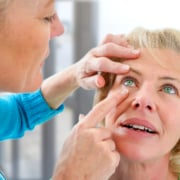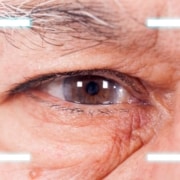Early Warning Signs of Cataracts You Shouldn’t Ignore
Cataracts are a common eye condition that involves the lens of the eye becoming cloudy, making your vision appear blurred or dim. This happens when proteins in the lens break down and clump together.
Since cataracts develop gradually, recognizing the early signs, such as subtle changes in your vision, is essential. This slow progression allows you time to seek treatment before your vision is significantly impacted, helping you maintain a better quality of life.
Discover some warning signs of cataracts below.
Recognizing the Early Warning Signs of Cataracts
Being aware of the early signs of cataracts can help you seek timely medical advice and maintain your vision health. If you notice any of these changes, it’s important to consult with an eye care professional right away:
- Blurred Vision: You may notice that your sight isn’t as sharp as it used to be, and things appear blurry, no matter how much you squint.
- Difficulty Seeing at Night: Cataracts can make it harder to see in low light, affecting your ability to drive safely after dark.
- Halos Around Lights: Bright lights might begin to halo, making nighttime driving particularly challenging.
- Frequent Changes in Prescription Glasses: If you find yourself needing a new glasses prescription more often than usual, it could be a sign of cataracts.
- Fading or Yellowing of Colors: Colors might not seem as vivid as before, or they may have a brownish tint.
When to Consult a Professional
If you suspect you’re experiencing signs of cataracts, it’s important to consult an eye care professional. Scheduling a comprehensive eye exam is the first step in confirming if you have cataracts and discussing potential treatment options.
Early diagnosis can greatly benefit you, as treatments, including cataract surgery, are generally safe and highly effective.
Additionally, maintaining regular eye check-ups is crucial, especially as you age or if you have risk factors linked to cataracts. These preventive measures can help preserve your vision and enhance your quality of life.
Schedule Your Cataract Consultation in Honolulu
If you’re noticing any signs of cataracts, don’t wait to seek professional advice. Jeffrey Maehara, MD, is committed to providing you with personalized care and effective treatment options.
Schedule a consultation with our experienced team in Honolulu, HI. You can also call us at 808.955.3937. Protect your vision and take the first step toward clearer sight today.









 You may enjoy having a cloudy fall day to take in the changing leaves and weather around you, but the last thing you likely want is a clouding of your vision. As a disease that affects over 24 millions Americans, cataracts is an eye disease that causes a clouding of the lens which makes it difficult for light to properly enter the eye. Luckily,
You may enjoy having a cloudy fall day to take in the changing leaves and weather around you, but the last thing you likely want is a clouding of your vision. As a disease that affects over 24 millions Americans, cataracts is an eye disease that causes a clouding of the lens which makes it difficult for light to properly enter the eye. Luckily, 


